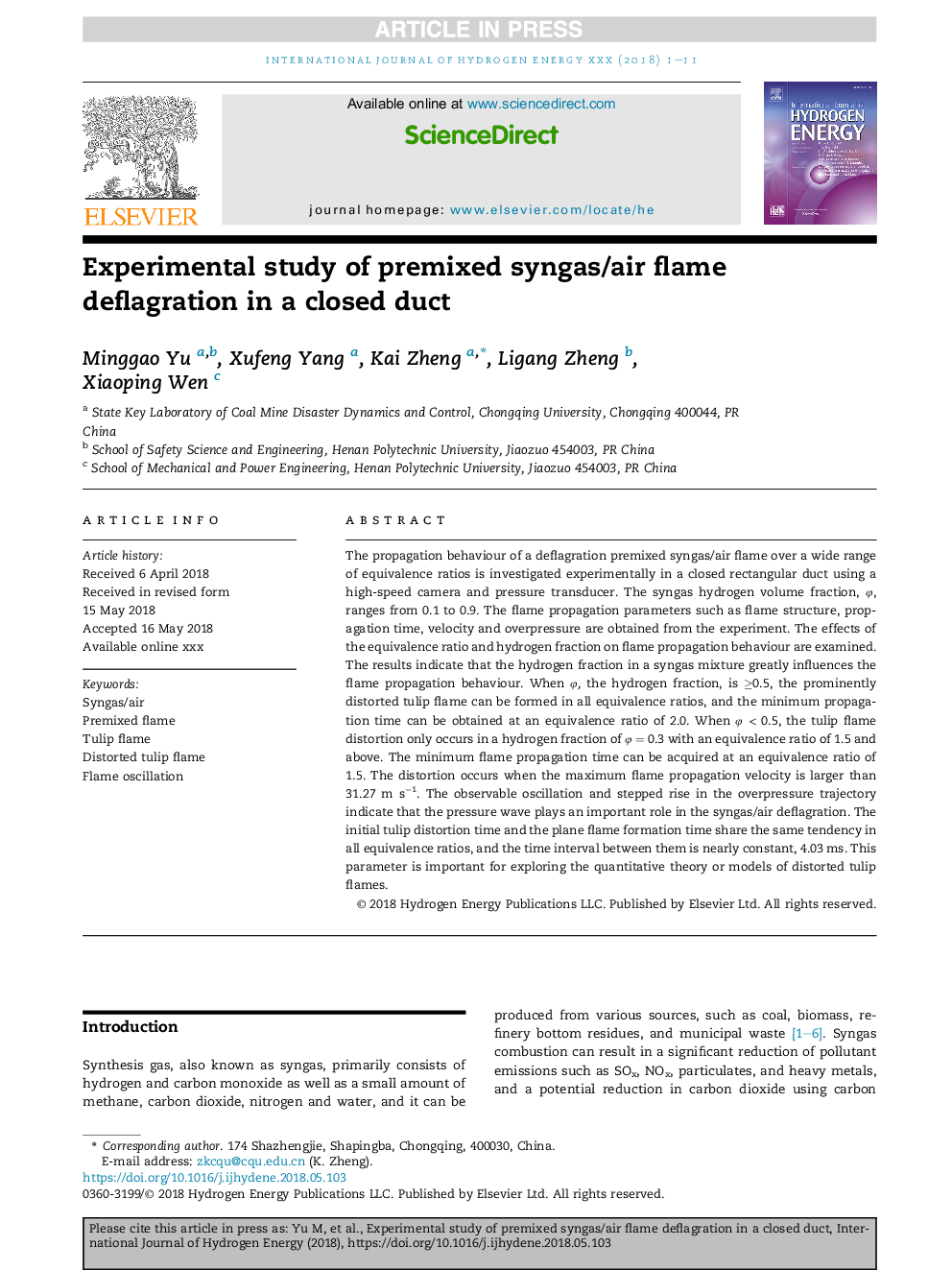| Article ID | Journal | Published Year | Pages | File Type |
|---|---|---|---|---|
| 7705634 | International Journal of Hydrogen Energy | 2018 | 11 Pages |
Abstract
The propagation behaviour of a deflagration premixed syngas/air flame over a wide range of equivalence ratios is investigated experimentally in a closed rectangular duct using a high-speed camera and pressure transducer. The syngas hydrogen volume fraction, Ï, ranges from 0.1 to 0.9. The flame propagation parameters such as flame structure, propagation time, velocity and overpressure are obtained from the experiment. The effects of the equivalence ratio and hydrogen fraction on flame propagation behaviour are examined. The results indicate that the hydrogen fraction in a syngas mixture greatly influences the flame propagation behaviour. When Ï, the hydrogen fraction, is â¥0.5, the prominently distorted tulip flame can be formed in all equivalence ratios, and the minimum propagation time can be obtained at an equivalence ratio of 2.0. When Ï < 0.5, the tulip flame distortion only occurs in a hydrogen fraction of Ï = 0.3 with an equivalence ratio of 1.5 and above. The minimum flame propagation time can be acquired at an equivalence ratio of 1.5. The distortion occurs when the maximum flame propagation velocity is larger than 31.27 m sâ1. The observable oscillation and stepped rise in the overpressure trajectory indicate that the pressure wave plays an important role in the syngas/air deflagration. The initial tulip distortion time and the plane flame formation time share the same tendency in all equivalence ratios, and the time interval between them is nearly constant, 4.03 ms. This parameter is important for exploring the quantitative theory or models of distorted tulip flames.
Related Topics
Physical Sciences and Engineering
Chemistry
Electrochemistry
Authors
Minggao Yu, Xufeng Yang, Kai Zheng, Ligang Zheng, Xiaoping Wen,
